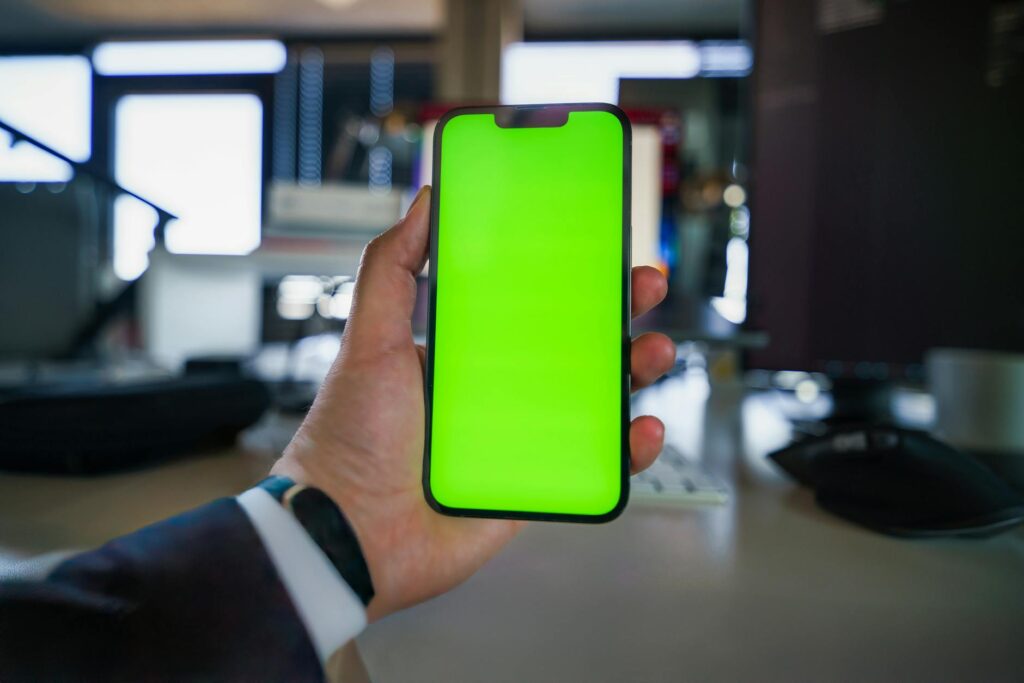The Leaky Bucket of Global Aid and How to Fix It
We’ve all been there. A natural disaster flashes across our screens, a humanitarian crisis unfolds, and we feel compelled to help. We donate to a reputable organization, trusting our money will reach the people who need it most. But what if a significant chunk of that donation never makes it? What if it gets eaten by administrative fees, lost in a bureaucratic maze, or, worse, siphoned off by corruption? It’s a frustrating reality. The traditional system for delivering aid, while born from noble intentions, is often a leaky bucket.
The problem isn’t a lack of generosity; it’s a lack of efficient, transparent, and secure infrastructure. For decades, we’ve wrestled with these issues, but now, a technology from the world of crypto and blockchain offers a radical new solution: On-Chain Identity. It sounds technical, I know. But the concept is surprisingly simple and its potential to reshape humanitarian aid is nothing short of revolutionary. It’s about ensuring that a dollar given is a dollar received, directly into the hands of the person it was meant for. No middlemen. No leakage. Just impact.
Key Takeaways
- The Problem with Traditional Aid: Current systems suffer from high overhead costs, slow delivery, lack of transparency, and vulnerability to fraud and corruption.
- What is On-Chain Identity?: It’s a secure, self-controlled digital identity that lives on a blockchain. It allows individuals to prove who they are without relying on a central authority like a government or a bank.
- The Core Benefits: This technology drastically reduces fraud by creating a single, verifiable identity per recipient. It slashes administrative costs by automating payments and removing intermediaries.
- Empowerment and Dignity: On-chain systems give aid recipients control over their own data and provide a direct, dignified way to receive funds and resources.
- Challenges Remain: Widespread adoption faces hurdles like internet accessibility, digital literacy, and the need for user-friendly interfaces, but the potential is too significant to ignore.
Why Is Traditional Aid Delivery So Broken?
To truly appreciate the solution, we have to sit with the problem for a minute. The challenges facing humanitarian aid organizations are immense. They operate in some of the most difficult environments on earth, often dealing with chaotic post-disaster situations or politically unstable regions.

The infrastructure they rely on is often a patchwork of legacy systems, paperwork, and multiple intermediaries. Think about the journey a typical donation takes:
- You donate online. A credit card company takes a fee.
- The charity processes the donation, which involves administrative overhead (salaries, office space, marketing).
- The central office wires funds to a regional office. Bank fees and currency conversion fees apply.
- The regional office works with a local partner organization, which also has its own overhead.
- The local partner tries to distribute the aid. This can involve cash, which is risky to transport and easy to steal, or physical goods, which have logistical costs and are prone to mismanagement.
At every single step, there’s a potential for delay, cost, and corruption. A significant portion of the initial donation can evaporate before it ever provides a meal or a blanket. This is the ‘leaky bucket’ in action. Furthermore, how do you verify who needs aid? In many crises, people lose their identification documents. This makes it incredibly difficult to prevent fraud, where individuals might claim aid multiple times or ghost recipients are created to divert funds.
So, What Exactly is On-Chain Identity?
Alright, let’s demystify the tech jargon. Forget complex code for a moment and think about your wallet. In it, you have a driver’s license from the DMV, a passport from the government, and maybe a student ID from your university. Each of these was issued by a central authority that vouches for who you are. You don’t own the identity itself; you’re just borrowing it. If you lose that wallet, proving who you are becomes a massive headache.
On-Chain Identity flips this model on its head. It’s a core component of what’s known as Self-Sovereign Identity (SSI). The ‘sovereign’ part is key—it means you are in control.
Self-Sovereign Identity (SSI): You’re the Boss of Your Data
With SSI, your identity isn’t stored in a government database or on a corporate server. It’s secured on a blockchain, a distributed and immutable digital ledger. You hold the private keys to this identity, like a password that only you know. This gives you complete control over your personal information. You choose what to share, with whom, and for how long. It’s like having a digital passport that no one can take away from you and that you can present anywhere in the world.
Decentralized Identifiers (DIDs): A Unique Digital Fingerprint
How does this work in practice? Through something called a Decentralized Identifier, or DID. A DID is a unique, globally resolvable, and cryptographically verifiable address that points to you. It’s like a permanent phone number for your identity that isn’t tied to any single company or country. It’s yours and yours alone.
Verifiable Credentials (VCs): Provable, Digital Documents
Once you have your DID, organizations can issue you Verifiable Credentials (VCs). Think of these as the digital versions of the cards in your wallet. A government aid agency could issue a VC confirming you are a refugee. A local health clinic could issue a VC confirming your child’s vaccination status. The UN could issue a VC confirming you are the head of your household. These VCs are digitally signed and tamper-proof. You store them in your digital wallet and can present them to prove specific facts about yourself without revealing all your other information.
How On-Chain Identity Supercharges Aid Delivery
This is where it all comes together. When you combine a secure, self-owned identity with the ability to receive digital currency directly, you fundamentally change the aid delivery equation. Here’s how.
Slicing Through Corruption and Fraud
This is the big one. With an on-chain identity system, each aid recipient is registered once with a unique DID, often verified through biometrics like a fingerprint or iris scan. This creates a one-to-one link between a digital identity and a real person. Suddenly, the problem of ‘ghost’ recipients vanishes. It becomes impossible for one person to register under multiple names to claim extra rations. Because the blockchain is a transparent and immutable ledger, donors and aid organizations can see exactly which DID received funds and when. It introduces a radical level of accountability that simply doesn’t exist in a paper-based or traditional cash system.
Slashing Administrative Bloat and Overhead
Remember all those intermediaries? Banks, payment processors, multiple layers of NGOs. Many of them can be bypassed. Using smart contracts—self-executing code on a blockchain—an aid organization can set up rules for distribution. For example: ‘On the first of every month, send $50 worth of a stablecoin to every registered DID in this specific region.’ The process is automatic. It’s instantaneous. It removes the need for huge administrative teams to manage complex financial transfers. This means more of every dollar donated goes directly to providing aid, not to maintaining the bureaucracy that delivers it.

Delivering Aid with Speed and Precision
In the aftermath of a tsunami or earthquake, speed is everything. The traditional process of getting cash into a disaster zone can take days or weeks. With a blockchain-based system, aid can be deployed in minutes. As soon as a person’s identity is verified and they are registered, funds can be sent directly to their digital wallet. They can then use these funds at local shops that accept digital payments, or at designated cash-out points. This also allows for incredible precision. Aid can be targeted to specific demographics (e.g., families with young children) or can be conditional (e.g., a voucher for school supplies that can only be spent at approved vendors).
Empowering Recipients with Dignity and Control
Perhaps the most overlooked benefit is the restoration of dignity. Standing in line for hours to receive a handout can be a dehumanizing experience. It strips people of their agency. An on-chain system gives them a digital wallet, a tool they control. It gives them the freedom to purchase what their family actually needs, not just what an aid organization has decided to provide. It also gives them control over their personal data. They are no longer just a name on a list in a filing cabinet; they are the sovereign owners of their own identity. This is a powerful psychological shift, moving from passive recipient to active participant in their own recovery.
“By giving individuals control over their own identity, we’re not just giving them aid; we’re giving them back their agency. It’s a fundamental shift from a top-down charity model to a bottom-up empowerment model.”
Real-World Scenarios: Putting Theory into Practice
This all sounds great in theory, but what would it look like on the ground?
Scenario 1: Natural Disaster Relief
A hurricane devastates a coastal community. Many people have lost their homes, possessions, and identification papers. Aid workers arrive with ruggedized tablets. They go shelter to shelter, registering survivors. They take a photo, scan a fingerprint, and create a DID for each head of household. A Verifiable Credential is issued to their new digital wallet, confirming their status as a ‘displaced resident.’
Instantly, the global aid organization airdrops $100 in a digital currency to every registered wallet. A message is sent out listing local grocers and merchants who have been equipped with simple point-of-sale terminals to accept these digital payments. A family can immediately go and buy food, clean water, and medicine. No waiting for cash shipments. No risk of theft. The entire process is transparent and auditable on the blockchain.
Scenario 2: Long-Term Refugee Support
Consider a refugee camp that has existed for years. A person named Aisha has a DID. Over time, her digital wallet accumulates Verifiable Credentials. One from the WFP confirms her family’s food ration eligibility. One from a camp doctor confirms her children’s vaccination history. Another from an online education provider proves she completed a skills course.
This collection of VCs becomes a portable, persistent record of her life and qualifications. If her family is ever resettled in a new country, she doesn’t arrive with nothing. She has a trusted, verifiable history that can help her access services, apply for jobs, and enroll her children in school. Her identity isn’t tied to a specific camp or a specific organization; it’s hers, and it travels with her.
The Hurdles We Still Need to Jump
Let’s be realistic. Implementing this vision isn’t as simple as flipping a switch. There are significant challenges to overcome.
- The Digital Divide: The most vulnerable populations often have the least access to smartphones and reliable internet. Solutions need to work offline or in low-bandwidth environments, perhaps using USSD technology or physical smart cards.
- User Experience (UX): Blockchain technology is notoriously user-unfriendly. Managing private keys and understanding crypto concepts is a non-starter for most people, let alone those in a crisis. The interfaces have to be incredibly simple and intuitive.
- Scalability and Cost: While transaction costs on some blockchains are falling, processing millions of transactions can still be expensive and slow. We need scalable infrastructure that can handle the load without breaking the bank.
- Regulation and Governance: How do these systems interact with existing laws? Who governs the identity protocols? These are complex questions that require collaboration between technologists, NGOs, and governments.

Conclusion
The path to implementing on-chain identity for aid delivery is filled with challenges, but the potential payoff is immense. We’re talking about a future where donations are not just acts of hope but acts of verifiable impact. A future where aid recipients are not just data points on a spreadsheet but empowered individuals with control over their own lives. By tackling the foundational problem of identity, we can fix the leaky bucket of humanitarian aid once and for all, ensuring that our collective generosity flows efficiently, transparently, and directly to those who need it most.
FAQ
Is an on-chain identity system actually secure?
Yes, when designed correctly, it’s incredibly secure. It uses strong cryptography, the same technology that protects billions of dollars in cryptocurrency. Because the identity is decentralized and controlled by the user’s private keys, there is no central database to hack. The user has to authorize any sharing of their data, making it far more secure than traditional systems where personal information is held by multiple organizations.
Do you need to be a tech expert to use this?
Absolutely not. For this to work, the user experience must be as simple as using any other mobile app. The complexity of the blockchain and cryptography should be completely hidden from the user. Think simple interfaces, biometric logins (fingerprints), and clear instructions in local languages. The goal is to make it accessible to everyone, regardless of their technical literacy.


